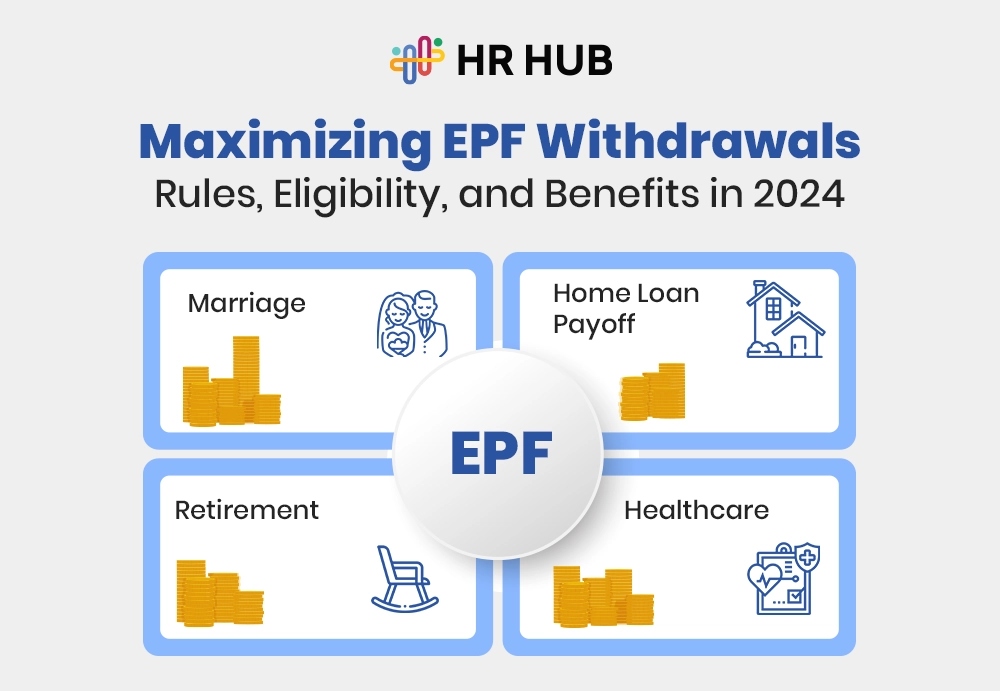Let’s face it—we’ve all been part of those whispered workplace conversations.
- "How much do you think they’re paying Mark?"
- "I heard Jessica makes more than Sam for the same role."
- "HR says compensation is confidential. Why though?"
Welcome to the murky waters of pay secrecy—a space where trust goes to drown and rumors run wild.
But there’s a rescue mission in progress that comes dressed in legislation. Enter: Pay Transparency Laws—a movement turning the spotlight on salaries and pushing employers to leave the shadows.
Transparency Isn't Trending—It's a Revolution Unfolding
Pay transparency mandates are lawful provisions that require employers to disclose employees' wages. In states such as Maryland or California, that may take the form of sharing salary bands inside the organization, publishing ranges for salaries on job postings, or providing pay scales on demand.
Why are they gaining so much traction across the U.S.?
Because employees are tired of the guessing games, they demand fairness, clarity, and the right to understand how their paycheck stacks up against peers. And lawmakers? They're listening.
What used to be “nice to know” is now becoming “required by law.”
In states like Colorado, California, New York, and Washington, companies must now disclose pay ranges during the hiring process, giving candidates a sense of what they’re walking into.
And if we talk about India’s pay transparency requirements, currently, there are no legal requirements for employers to post salary details to applicants or employees regarding specific positions.
But at the heart of all this? Trust.
Transparency in compensation helps break down systemic inequality, reduce wage discrimination, and establish a more equitable playing field.
Why Are Employees Cheering for Pay Transparency?
Let’s face it—mystery salaries and secret pay grades are so last decade. Employees today want more than a paycheck—they want clarity, fairness, and a voice. And that’s exactly what pay transparency delivers.
It’s the End of "Guess Your Worth" Games
Employees were left in the dark about how their pay was determined for too long. Whether negotiating blindly during the hiring process or awkwardly wondering if a colleague with the same job made more, the lack of transparency created tension, mistrust, and disengagement.
But when pay scales are clear and accessible? The guesswork disappears. Employees finally know where they stand and where they can go.
Fighting Inequality—One Pay Range at a Time
Let’s be real—hidden pay structures allowed bias to thrive. Women, minorities, and other oppressed groups have long been underpaid for performing the same work. Pay transparency legislation pulls those gaps into the daylight and gives employees the power to speak out.
By seeing clear salary bands and job ladders, employees can question discrepancies and demand equity—not just hope for it.
Transparency = Trust
When a company is transparent about how they compensate, it sends a strong message: We have nothing to hide.
Employees feel more valued and respected when their pay isn't a secret or an afterthought. That trust becomes the basis for improved morale, increased loyalty, and—let's not forget—improved performance.
Bonus: It Helps Career Planning
Employees no longer must wait for an annual review to find out whether they're being underpaid and what their future promotions might have in store for them. They can plan, set clear expectations, and check out what works with open-ended structures—without second-guessing or guessing in the dark.

Pay Transparency Is a Business Win, Too
Think pay transparency is just an employee benefit? Think again. It’s a strategic advantage for forward-thinking businesses—a tool to build credibility, attract top talent, and stay ahead of legal risk.
Safeguard Against Legal Trouble
With more states implementing pay transparency laws, non-compliance isn’t just risky—it’s reckless. Businesses that don’t disclose salary ranges or fail to justify compensation differences could face fines, lawsuits, and media backlash. It’s not a matter of “if” you’ll be caught—it’s “when.”
Getting ahead of the law shows your company values integrity and accountability, not just legal survival.
Brand Power: Be the Employer Everyone Talks About (In a Good Way)
Imagine being known as the company that champions fairness and transparency. That’s gold in today’s job market.
Companies that lead openly are viewed as ethical, inclusive, and progressive. This kind of brand positioning turns candidates into advocates and employees into evangelists.
Magnet for Talent
Today’s workforce—especially Gen Z and Millennials—isn’t afraid to ask, “What’s the pay?” They expect the answer upfront. Transparent companies signal confidence, clarity, and equality—values top talent actively seek.
So, while other employers lose candidates to vague job descriptions, transparent ones fill roles faster with better fits.
It’s Not Just Hiring—It’s Retention, Too
Pay transparency doesn’t just bring people in—it keeps them. Employees who feel they’re being paid fairly and understand the system are less likely to job-hop or harbor resentment.
The Legal Landscape: A State-by-State Patchwork
Welcome to the wild, wild west of pay transparency regulation. There’s no single national law—yet—but across the U.S., states are making moves, and businesses need to keep up.
Who’s Leading the Charge?
Let’s break it down:
- California: Requires employers with 15+ employees to include salary ranges in job listings and share pay scale info with current employees.
- Colorado: One of the first to mandate wage ranges and benefit disclosures in job postings.
- New York: Similar laws were recently implemented for NYC and the state, demanding pay range visibility.
- Washington and Rhode Island: Follow suit with nuanced laws around transparency and candidate rights.
And guess what? More states are joining the list every quarter.
Penalties Aren’t Pretty
Failure to comply can result in:
- Fines and government sanctions
- Legal actions from current or potential employees
- The reputational damage that spreads like wildfire on LinkedIn and Glassdoor
And the worst part? You might not even know you’re breaking the rules—until it’s too late.
One Size Doesn’t Fit All
Each state’s law varies in:
- Who it applies to (company size, remote employees, etc.)
- When pay must be disclosed (job post vs. upon request)
- How salary bands should be structured and shared
That means multi-state employers must customize compliance strategies per location, not just apply a blanket policy.
Turning Policy Into Practice: A Transparent Pay System
Pay transparency isn’t just a legal checkbox—it’s a cultural shift. Implementing it effectively takes planning, precision, and many people skills.
Step 1: Build a Transparent Compensation Philosophy
Before you publish salary bands, define the why behind them.
- Are your salaries market-driven?
- Do you reward tenure, performance, skills—or a mix of all three?
- How are raises determined?
When employees understand the logic, they’re more likely to trust the outcome—even if they’re not at the top of the range.
Step 2: Create and Share Salary Bands
Develop salary bands for every job level, from junior to executive. This helps standardize expectations across departments and locations.
Tip: Ensure the bands reflect real market data and get reviewed annually to stay competitive.
Step 3: Communicate Like a Human
Don’t just throw a chart on a PDF and call it a day. Walk your employees through it. Offer Q&A sessions, internal guides, and feedback opportunities.
Make the conversation ongoing, not a one-off announcement.
Step 4: Use Tools to Stay Consistent
Platforms like PayScale, Radford, and Paylocity help HR teams manage pay bands, benchmark against industry data, and stay legally aligned.
Pay transparency only works when it’s clear, consistent, and well-communicated.
The Challenges? Real. The Solutions? Even Better.
Let’s not sugarcoat it—implementing pay transparency can be uncomfortable. But avoiding it only creates bigger problems.
Common Roadblocks
- Fear of internal backlash: Employees may be shocked by gaps or inequities.
- Manager discomfort: Leaders aren’t always trained to have transparent conversations.
- Historic inconsistencies: Long-standing pay discrepancies come to the surface.
But here’s the truth: those issues already exist—transparency just brings them into focus. And once they’re visible, they can be fixed.
How to Tackle It Head-On
- Train managers to talk about compensation with empathy and confidence.
- Run pay audits before going public—clean house if needed.
- Roll out in stages, starting with new hires or select departments to test the waters.
- Pair transparency with growth plans so employees know how to move up.
Transparency isn't about being perfect—it's about being honest and planning to improve.
Every bump in the road is a chance to build more trust.
Prove It: Measuring the Trust You’ve Built
Pay transparency isn’t a “set it and forget it” initiative. You’ve got to measure its impact, refine your approach, and keep the momentum going.
Collect Real Feedback
Start with employee surveys focused on:
- Understanding of compensation policies
- Perception of fairness
- Confidence in management’s decisions
Anonymous surveys help uncover concerns early and give you a roadmap for improvement.
Track Key Metrics
Monitor data that shows whether your transparency efforts are working:
- Employee retention rates
- Internal promotion statistics
- Job offer acceptance ratios
- Glassdoor/LinkedIn sentiment
If you’re doing it right, these numbers should trend up.
Revisit. Reassess. Repeat.
Pay transparency isn’t a one-time rollout—it’s an ongoing process. Review your strategy quarterly. Update salary ranges as the market shifts. Keep the dialogue open.
The real ROI? Stronger teams, longer tenures, and higher-performing employees who trust their employer.
Trust is measurable. And with transparency, it’s scalable.

Final Takeaway: Transparency Isn’t Just About Pay—It’s About Principles
Let’s be real—employees aren’t longer looking for a paycheck. They’re looking for purpose, fairness, and honesty. And pay transparency? That’s the golden key to unlocking all three.
Companies that step into the light—openly sharing how compensation works, why it works, and what growth looks like—aren’t just checking compliance boxes. They’re rewriting the rules of employee trust. They’re building cultures where conversations aren’t avoided but embraced. Where people don’t guess—they know. And where loyalty doesn’t have to be earned over years of silence—it starts on day one.
As the workplace evolves, so must our approach to compensation. The question isn’t if you should embrace pay transparency—it’s how fast you can start.
And if you’re looking for a solution that makes this transition seamless, intuitive, and compliant—HR HUB has your back. From managing transparent pay structures to tracking employee engagement, HR HUB empowers organizations to build trust, boost retention, and lead with integrity.






